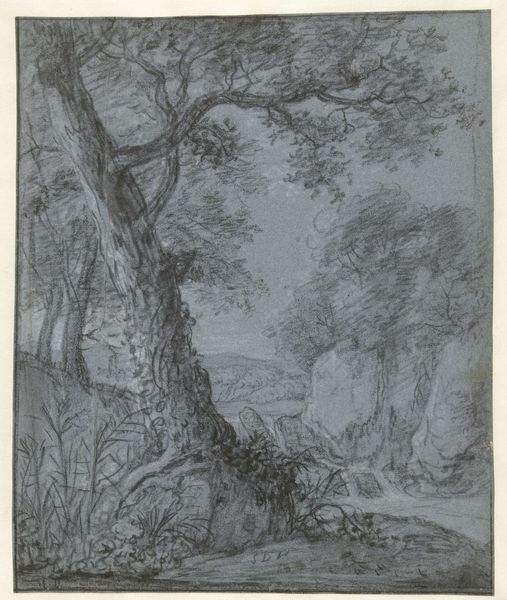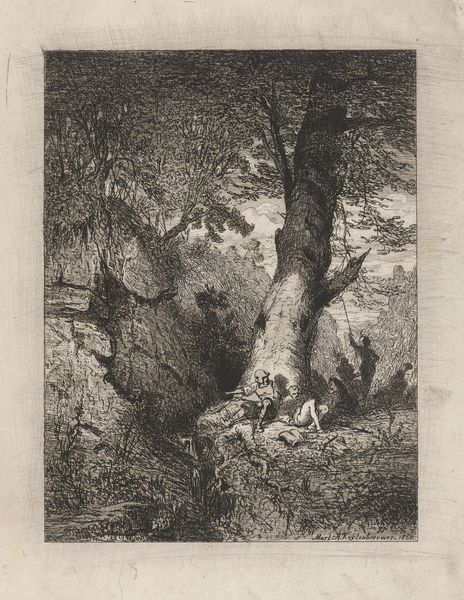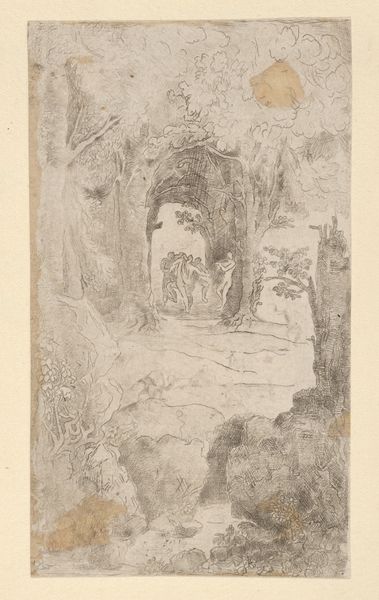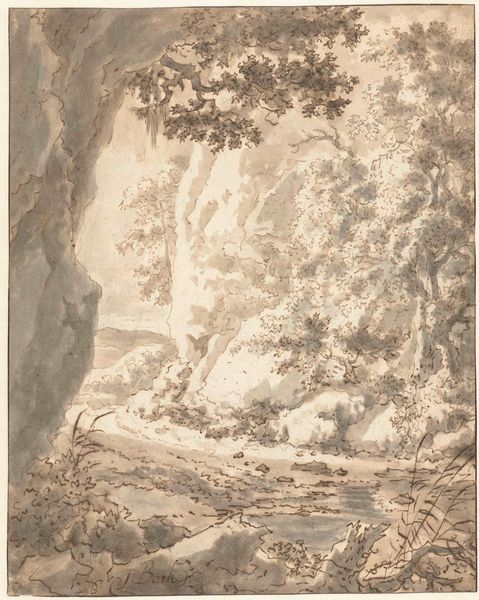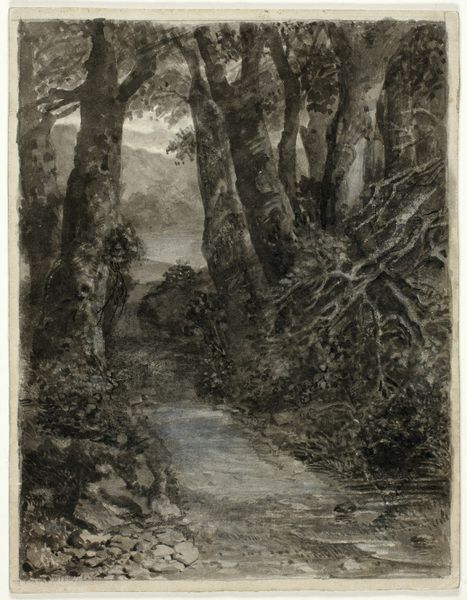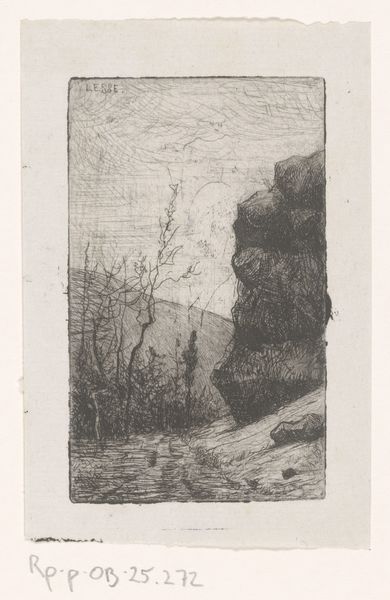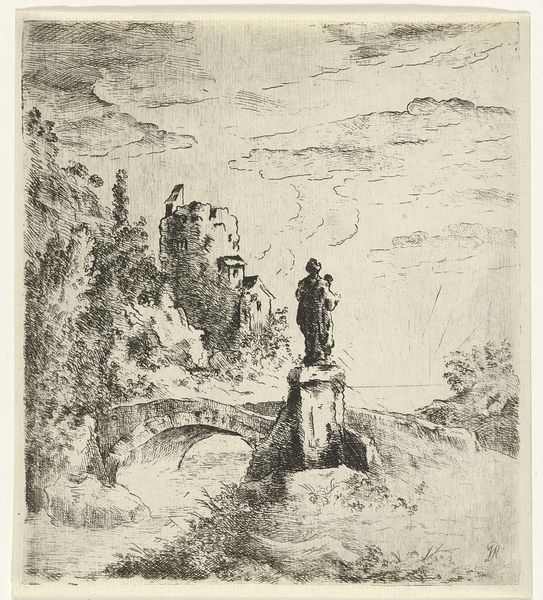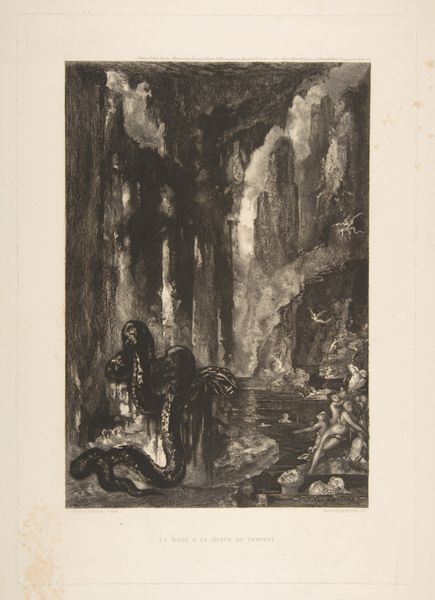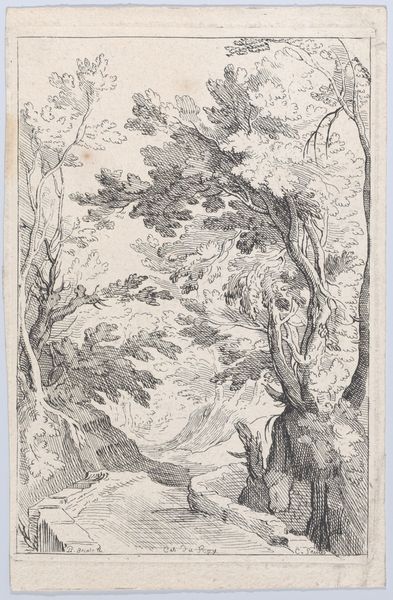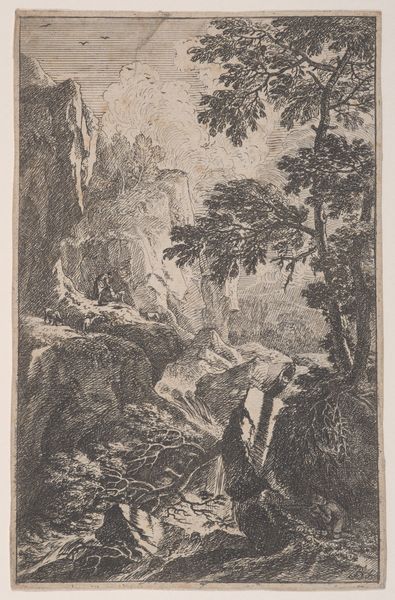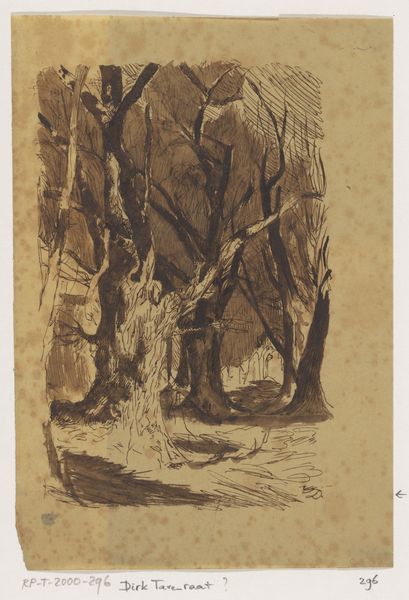
Man in tropisch bos, staande bij water 1833 - 1892
0:00
0:00
drawing, charcoal
#
drawing
#
pencil sketch
#
landscape
#
charcoal drawing
#
charcoal
#
charcoal
#
watercolor
#
realism
Dimensions: height 211 mm, width 132 mm
Copyright: Rijks Museum: Open Domain
Curator: Here we have "Man in Tropical Forest, Standing by Water," a work created between 1833 and 1892 by Johannes Christiaan d' Arnaud Gerkens, currently held at the Rijksmuseum. Editor: The somber sepia tones immediately evoke a feeling of humid closeness, like stepping into a dim, overgrown space. It's fascinating how the charcoal and pencil create such a tangible sense of density. Curator: Indeed. It’s interesting to consider the tradition of European artists depicting tropical landscapes. Works like this often reflect a colonial gaze, framing exotic locales for a European audience and shaping perceptions of the “other." Editor: From a material perspective, the artist’s choices speak volumes. Charcoal and pencil – readily available, relatively inexpensive. Were these sketches preparatory, for something larger, or considered finished works? The use of drawing hints at a democratizing impulse, a wider reach perhaps beyond the elite art circles. Curator: Perhaps. The Rijksmuseum context suggests it has now achieved canonical status. Looking closely, we see a lone figure standing by the water. This might represent humanity's place within a sublime, overwhelming nature, but also reinforces a dynamic of exploration and control central to colonial ideologies. Editor: That lone figure highlights a labor dynamic too, doesn't it? Who is this man? Is he observing or working? The rapid strokes of the charcoal make me think about the physical act of creation. This was not a pristine studio but, perhaps, sketched “en plein air,” exposing the paper, pigments, and artist himself to the elements. Curator: Right, the landscape genre itself played a pivotal role in constructing national identities and projecting power. The institutional framing elevates such pieces, contributing to the narrative and legitimizing specific ways of seeing. Editor: Yes. Ultimately, examining both the landscape itself and the means of its production encourages a vital dialogue around labor, representation, and access. Curator: An approach that allows us to consider not only what's being shown, but how and for whom, transforming our reading of the artwork itself. Editor: Exactly, that reframing highlights the multiple social and material conditions imbricated in this compelling depiction.
Comments
No comments
Be the first to comment and join the conversation on the ultimate creative platform.

